Guide To Buying A Dip Station
A conventional dip station is a stand with two parallel bars, used mainly for tricep, shoulder, and chest dips. Nowadays, dip stations come in many different types of structures and are a great way to incorporate a variety of freehand exercises that add real resistance to your workouts.
Product Comparison Table
What To Look for
04/04/2020
Regular vs. Power Tower vs. Assisted
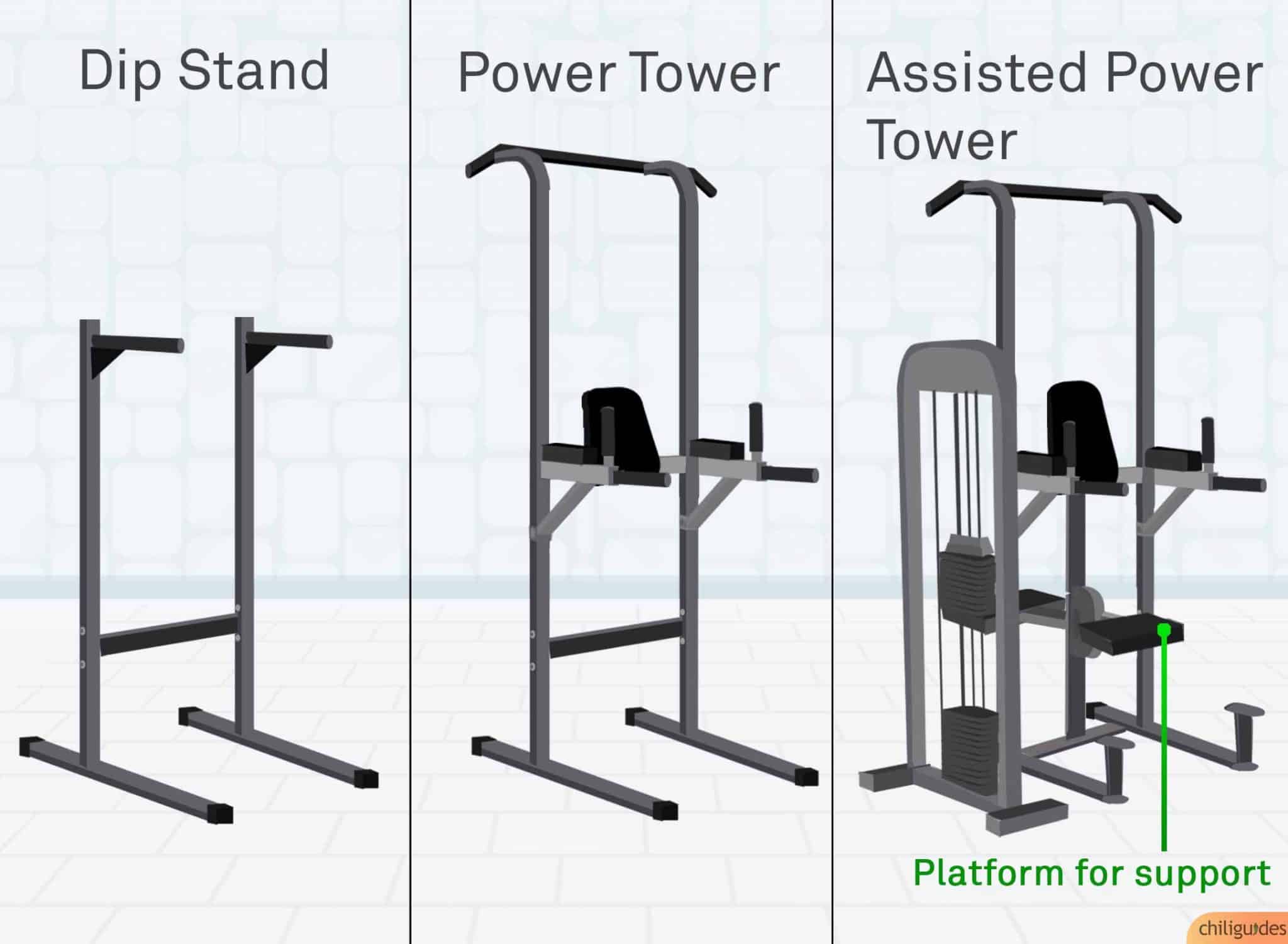


- A Regular Dip Station can either be a single stand with two parallel bars or two separate stands of the same measurement that serve as parallel bars. It is meant exclusively for performing dips and is an inexpensive option.
- A Power Tower has a pull-up bar and vertical bench along with the dip stand. It is suitable for people who want to perform bodyweight exercises for their back and abdominal muscles too.
- An Assisted Power Tower is just like a regular power tower, but it comes with a platform to support your body weight, which makes the exercises easier. An assisted power tower is the best choice for individuals who are unable to complete freehand exercises without some assistance.
Ensure your ceiling is higher than the dip station.
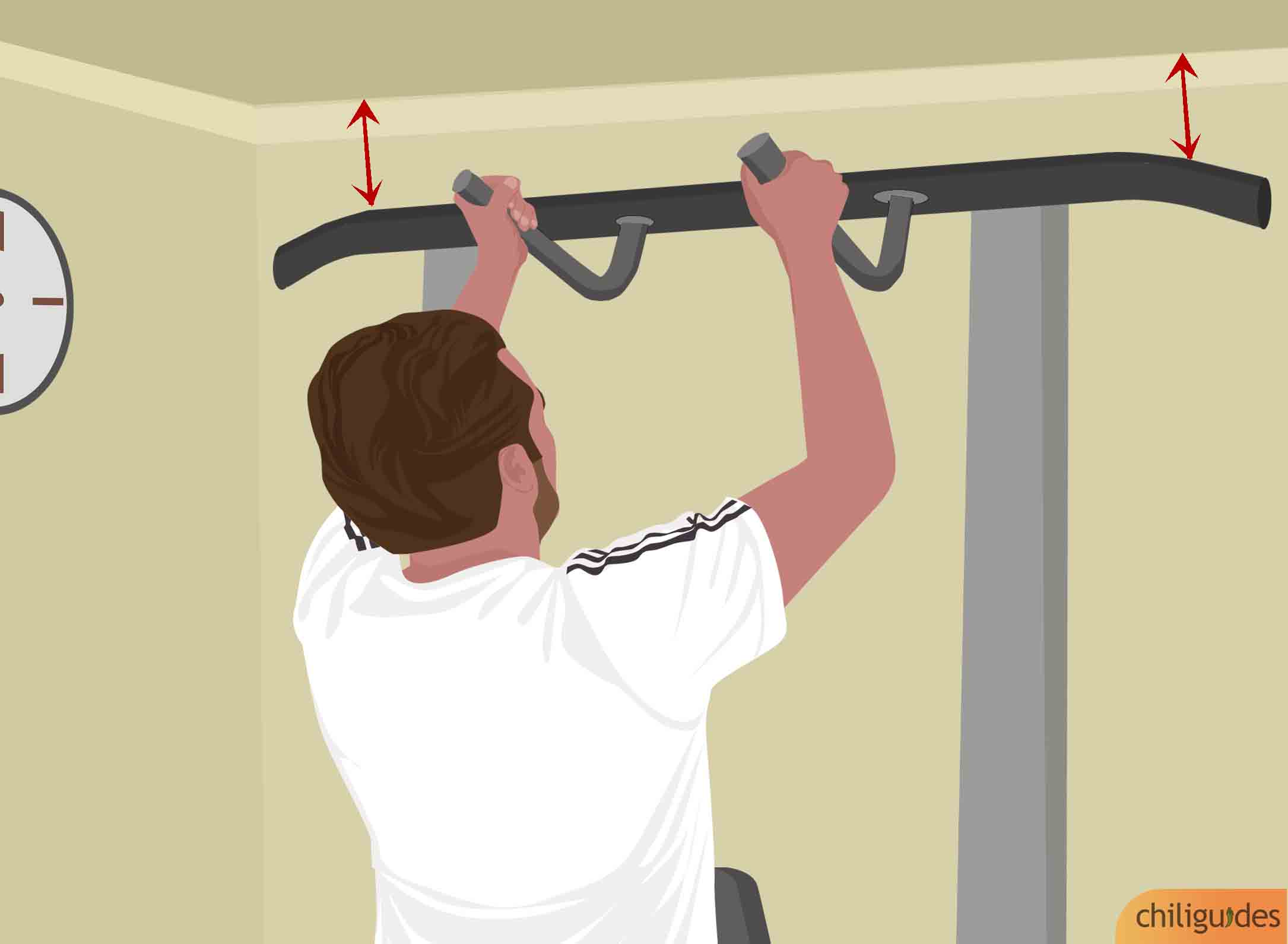


- Compare the height of the dip station to your ceiling height. There should be a gap of at least 1 1/2 feet between the dip station and ceiling.
- Regular dip stations do not require much space, but power towers can be notoriously high in height with some measuring beyond 7 feet.
The weight rating must be adequate.
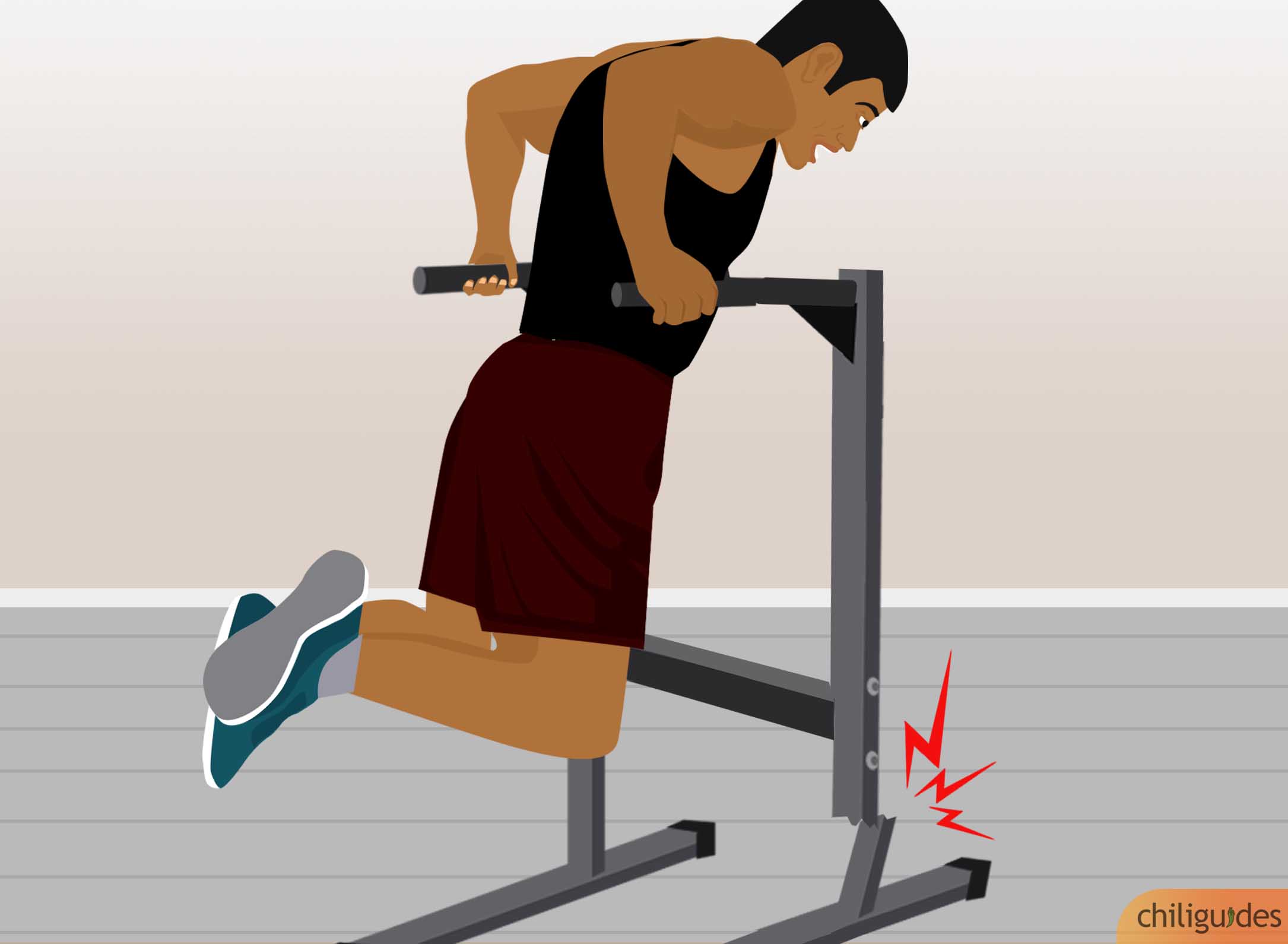


- Not all dip stations can bear the same weight, so make sure the frame is sturdy and the weight rating is enough for your body weight plus the maximum weight you intend to add.
- Most dip stations with solid construction shouldn’t have a problem handling your weight. However, it’s always better to check. Particularly if you’re over 225 lbs as some dip stations can’t sustain more than 250 lbs.
Top Picks



Best Commercial Grade Power Tower
Hammer Strength Assist Dip/Chin
For $4,470
- Counter balanced knee pad for smooth motion
- Foldable knee pad to remove assistance
- Multiple grip positions
- Plenty of color choices
- Takes 2 months minimum to manufacture and deliver
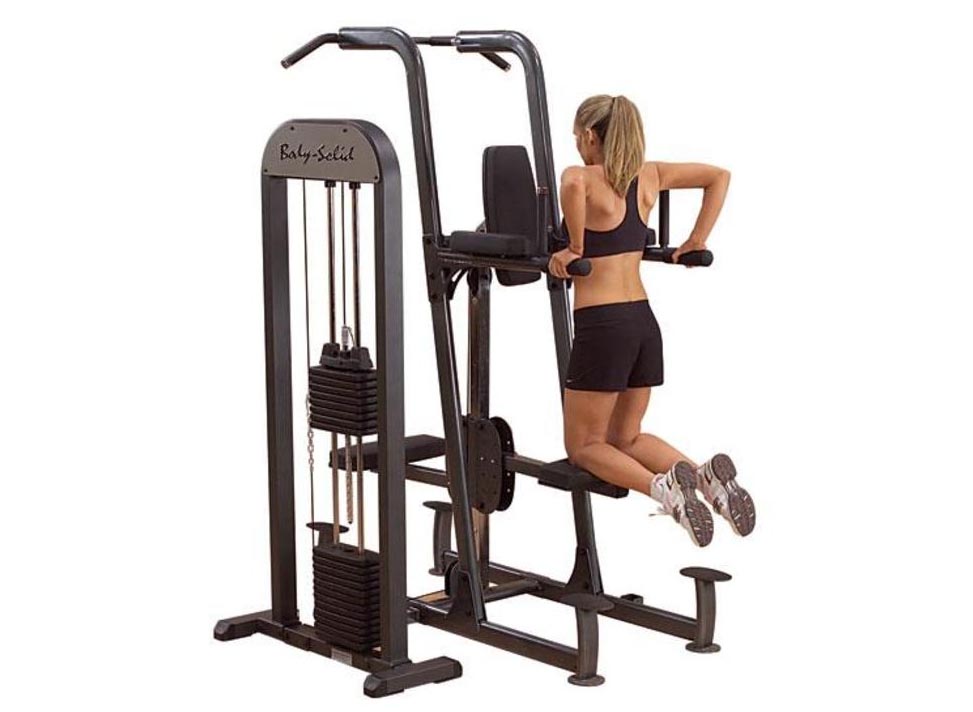


Best Assisted Power Tower For Home Use
Body-Solid Weight Assisted Chin and Dip
For purchase
- Brilliant for beginners to correct their form
- Versatile, can work a variety of muscle groups
- Comfortable to use
- Large footprint
- Extremely expensive
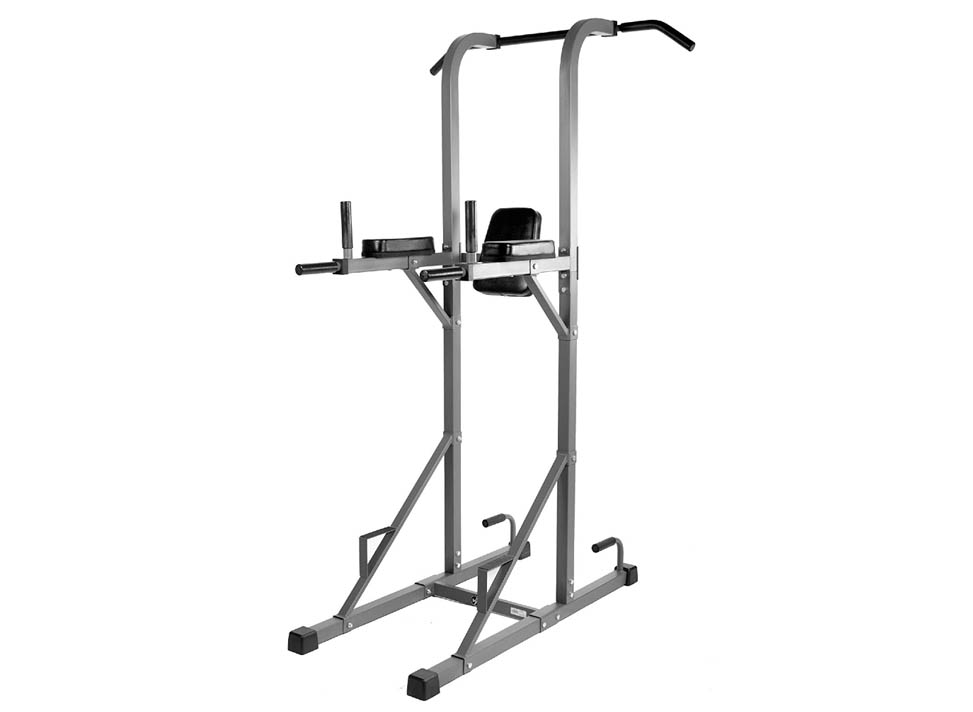


Best Power Tower
XMark Multi-Function Power Tower
For purchase
- Solid construction
- Excellent value for money
- Padded bars on vertical bench absorb tension from shoulders
- Dip bars may be slightly short in length for some users



Best Regular Dip Station
BEST CHOICE PRODUCTS DIP STAND
For purchase
- High maximum weight capacity
- Stabilizer keeps it from wobbling
- Firmly planted to the ground, doesn’t slip
Common Questions
Q:What is the difference between a dip stand, dip station, and dip bars?
These are all essentially the same thing. Dip stand and dip bars are synonymous. They include two U-shaped bars, about 1 inch in diameter, and they surround your body at the waist. You can use them to do dip exercises and headstand push-ups. The Dip station is like a more comprehensive dip stand as it also includes power towers and assisted power towers. Using them, you can do pull-ups, chin-ups, and other ab exercises, apart from the usual dip exercises.
Q:How do I do dips for my chest?
You can perform chest dips on parallel bars or pull-up and dip stations. Follow these steps:
- Gripping each bar with one hand, raise yourself above them while keeping your arms aligned with your body.
- Bend your knees so that they’re parallel to the floor. Point your heels behind to make an “L” shape with your body.
- Angle your body forward to between 20 and 30 degrees to work your chest muscles.
- While breathing in, gently lower yourself down until your shoulders are just below elbow level (Don’t go too far or you may risk an injury!)
- Angle your elbows outward until you feel your chest muscles stretch. Now lift yourself back to the original position and breathe out slowly.
- As you reach the top, don’t lock your elbows. Squeeze your chest for 1 second at the top of this motion.
Q:How do I do dips for my triceps?
You can perform tricep dips on parallel bars or pull-up and dip stations. Follow these steps:
- Gripping each bar with one hand, raise yourself above them while keeping your arms parallel to your body.
- Bend your knees so that they are parallel to the floor. Point your heels behind to make an “L” shape with your body.
- Keep your body upright and the arms close to the body to put the maximum strain on the tricep muscles.
- While breathing in, gently lower yourself down until your shoulders are just below elbow level (Don’t go too far or you’ll risk an injury!)
- Straighten your elbows as you push yourself up to the original position. Make sure that your elbows are not locked as you are returning to the starting position.
Q:Are bench dips better or dip stands?
To say that one exercise is better than the other would be wrong, as both have their benefits. In a bench dip, you use the bench to hoist your body up while in a regular dip on the dip stand, you hoist your full body weight onto the bars. So, a bench dip is a compound exercise that works not just your triceps, but also your chest muscles. A regular dip isolates your triceps by letting them do all the work.
Q:Can I do straight bar dips on a dip station?
Yes, you can. Make sure that your grip is within a few inches of the width of your hips. As you lower yourself down, your shoulder and traps will also get activated. Just ensure that your arms don’t flare outwards and that your elbows are pointing behind you as you reach the bottom.
Q:How do I do weighted dips on a dip stand?
To do weighted dips on a dip stand, you can:
- Wear a dip belt with weights attached
- Wear a weighted vest or even a heavy backpack
- Hold a dumbbell between your ankles
- Wear weightlifting chains
Make sure you have enough upper body strength to perform this exercise as you will pull your body weight plus whatever extra weight you’ve added.
Q:Why can't I just make a DIY dip stand at home?
You could, but you need expert knowledge about load-bearing structures. It is also vital to use robust materials. The stand will need to have enough strength to support your body weight. It should be sturdy enough to not wobble, bend, or break under tension. A poorly built stand is accident-prone and may lead to serious injury.

